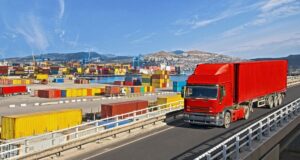Importers often struggle to keep shipping costs low when importing from China. Rising expenses can squeeze profits and reduce competitiveness. Without a clear plan, small costs quickly add up, cutting into profit margins. Every choice counts, from shipping methods to choosing the right partners.
This article covers practical strategies to reduce shipping costs. You’ll learn how to select shipping terms for greater control, discover the impact of partnering with the right freight forwarder, and explore how early planning and efficient container use can cut expenses. Each tip helps you save money while ensuring smooth, timely shipments.
Selecting the Right Shipping Method for Your Goods
Choosing the right shipping method is essential when importing from China. Sea freight, air freight, and courier services each serve distinct purposes, and selecting the wrong one can drive up costs. Matching the shipping method to your needs is key to controlling expenses.
For large or non-urgent shipments, sea freight is the most cost-effective choice. It allows you to ship in bulk, distributing the freight cost over a larger volume, which keeps rates lower. Though it takes longer, sea freight avoids the premium costs associated with faster methods.
Air freight, meanwhile, offers a quicker option for medium-sized shipments or when goods are time-sensitive but don’t justify courier rates. It balances speed with relatively lower costs than courier services, making it ideal for products needed within days.
Courier services are best for small, urgent shipments. Though costlier, couriers ensure door-to-door delivery in the shortest time, which can be invaluable for samples or critical items that need immediate attention.
Each method offers unique benefits, so choosing wisely based on order size, budget, and urgency can significantly lower overall shipping costs.
Choose the Right Incoterm for Your Situation
Incoterms are rules that clarify who is responsible for costs and duties at each stage of the shipping process, helping manage expenses effectively. Choosing the right Incoterm offers greater control over payment and responsibilities. With several options available, the best choice depends on your specific needs. See three common incoterms below.
FOB (Free on Board) ideal for many importing from China. Under FOB, the supplier covers export costs within China, but once the goods are shipped, the importer takes over all costs and logistics at the destination. This gives importers the flexibility to choose their own freight services, allowing for better cost control.
EXW (Ex Works) places more responsibility on the buyer. With EXW, the supplier prepares the goods at their facility, leaving the importer in charge of all transportation and costs from that point onward.
CIF (Cost, Insurance, and Freight) shifts more responsibility to the supplier, who manages shipping and insurance until the goods reach the destination port. While convenient, CIF can limit the importer’s ability to negotiate shipping costs, as the supplier handles this part of the process.
These are just a few of the Incoterms available, each tailored to different shipping needs. Choosing the right Incoterm is key to keeping your shipping costs under control. See incoterms complete guide here
| Incoterm | Supplier’s Responsibility | Buyer’s Responsibility | Best For |
|---|---|---|---|
| FOB (Free on Board) | Supplier covers export fees in China and delivers goods to the port. | Buyer pays for ocean freight, insurance (if needed), and all costs at the destination port. | Buyers who want control over freight choices and shipping costs. |
| EXW (Ex Works) | Supplier makes goods available at their facility. | Buyer handles all costs from the supplier’s location, including transport, export, and destination fees. | Buyers who want full control over the entire shipping process. |
| CIF (Cost, Insurance, and Freight) | Supplier covers transport and insurance until the goods reach the destination port. | Buyer pays for unloading, customs clearance, and any additional costs after the goods arrive. | Buyers who prefer suppliers to manage shipping but need to handle customs and local delivery. |
How to Reduce Costs using Freight Forwarders

Get Multiple Quotes and Negotiate Rates
- Compare Rates: Request quotes from multiple forwarders to compare pricing and service options.
- Negotiate Based on Volume: If you have a consistent shipping volume, leverage this to negotiate better rates.
- Consider Fixed Contracts: Locking in rates with a forwarder can protect you from price fluctuations, especially during peak seasons.
Consolidate Shipments
- Group Small Shipments: If you frequently ship small volumes, consolidate them into fewer, larger shipments. This reduces per-unit costs and can qualify you for bulk discounts.
- Work with Forwarders Specializing in Consolidation: Some forwarders offer services that consolidate multiple smaller shipments into one container, which can save you money.
Use Sea Freight When Possible
- Opt for Sea over Air: Sea freight is typically much cheaper than air freight, especially for larger or heavier shipments. Plan well in advance to use ocean shipping when timelines allow.
- Consider FCL for Volume: Full Container Load (FCL) shipments are more cost-effective per unit compared to Less than Container Load (LCL) for larger shipments, as LCL often incurs extra handling and documentation fees.Optimize Packing to Avoid Wasted Space
- Pack Efficiently: Ensure shipments are packed to use every available inch of space to avoid paying for unused container space.
- Reduce Package Weight: Lighter, compact packaging reduces costs. Work with suppliers to minimize packaging materials without compromising product safety.
Work with Freight Forwarders Who Offer Value-Added Services
- Leverage Consolidation and Warehousing: Some forwarders offer additional services like warehousing, allowing you to consolidate multiple suppliers’ goods into a single shipment.
- Request Transparent Fee Structures: Make sure the forwarder provides a clear breakdown of costs to avoid hidden fees that can increase overall expenses.
Utilize Free Trade Agreements (FTAs) and Duty Exemptions
- Check for Free Trade Benefits: Some countries have trade agreements with China that can reduce import duties, which lowers total shipping costs.
- File for Duty Exemptions When Applicable: Some items might qualify for reduced duties if they meet certain conditions; your freight forwarder can help you identify these opportunities.
By exploring these strategies, you can significantly reduce shipping costs when working with multiple forwarders from China.
Shipping Routes to Optimize Costs
Choosing the right shipping route is a primary method for reducing freight costs. For cargo from China to the US, there are two main route options: the full waterway route and the land bridge route. Each offers unique benefits based on budget and delivery timelines.
- Full Waterway Route
Moving cargo entirely by sea is a cost-effective choice, as it avoids additional rail and handling fees, making it ideal for non-urgent goods. This slower route can save many hundreds of $$ per shipment compared to faster alternatives and is practical for goods with flexible delivery schedules. - Land Bridge Route
Combining ocean freight with rail transport offers faster delivery but at a higher cost due to rail fees. Once the cargo arrives at a port, it transfers by train to its destination, which is ideal for shipments requiring a quicker turnaround. - Consolidated Shipping
For smaller shipments, consider Less-than-Container Load (LCL) consolidation. Grouping your goods with others can reduce costs, especially when the full container isn’t necessary. This approach is budget-friendly while ensuring your shipment still arrives within a reasonable time frame. - Leverage Off-Peak Seasons
Shipping costs tend to rise during peak seasons (e.g., before holidays). Planning shipments during off-peak periods can help you secure lower rates. Negotiating with freight forwarders for lower rates during these times can also cut costs significantly. - Negotiate with Freight Forwarders
Many freight forwarders offer volume-based discounts or can recommend routes with lower fees. Building relationships and negotiating terms with a reliable forwarder can provide cost savings over time.
Optimize Packaging to Maximize Container Space
Efficient packaging cuts shipping costs by reducing wasted space. Since shipping companies charge by size or weight, unused space means paying for volume you don’t use. By optimizing packaging, you can fit more items into fewer containers, saving on costs.
Coordinate with your supplier to align packaging with container dimensions. For instance, if your cartons hold 20 items, but larger cartons could fit 25 items, switch to larger cartons. This reduces the total number of cartons and containers needed.
Avoid using a 40-foot container unless it’s fully loaded. Otherwise, you’re paying for empty space at a higher rate. Opting for a 20-foot container can save costs when volume allows.
Also, consolidating smaller orders into one container lowers costs per unit and streamlines your supply chain. Grouping multiple shipments reduces expenses and simplifies management.
Try our free Cubic measurement calculators here
Compare Quotes and Leverage Existing Relationships
Getting the best shipping rates starts with comparing different options. Request multiple quotes from various shipping services to find the most competitive rates. Different carriers offer different prices, so checking several options ensures you get the best deal. This step helps reduce freight costs and gives you more control.
If you have pre-negotiated rates, use them when working with suppliers in China. Applying your own shipping rates can lead to better discounts than relying on supplier-arranged shipping services. This keeps costs lower and ensures you know exactly what you are paying.
Building strong relationships with carriers also brings long-term benefits. Over time, carriers may offer exclusive discounts or better rates. Good partnerships make it easier to negotiate favorable terms and manage your shipping more effectively.
Conclusion
Reducing shipping costs when importing from China requires thoughtful planning. For more details, check out this guide on choosing the right freight forwarder.
It is also important to stay aware of overlooked fees, such as duties and taxes. These can impact your final costs if not accounted for early. Ask your forwarder or customs broker for a detailed breakdown of these charges to avoid surprises later. Taking these steps helps keep your shipping smooth and cost-effective.







